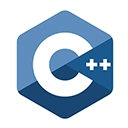Advanced file I/O techniques in C++ involve using streams and buffers to efficiently read and write data to and from files. This guide will provide you with an in-depth understanding of these concepts and demonstrate their use through sample code examples.
1. Streams in C++
Streams are a fundamental part of C++ I/O. They represent a sequence of characters or bytes and can be used for reading from or writing to various data sources, including files, standard input/output, and more. C++ provides two main types of streams:
- Input Streams: Used for reading data from a source.
- Output Streams: Used for writing data to a destination.
2. Sample Code: Reading from a File Using Streams
Here's a sample code example that demonstrates how to read data from a file using an input stream:
#include <iostream>
#include <fstream>
#include <string>
int main() {
std::ifstream inputFile("sample.txt");
if (!inputFile.is_open()) {
std::cerr << "Failed to open the file." << std::endl;
return 1;
}
std::string line;
while (std::getline(inputFile, line)) {
std::cout << line << std::endl;
}
inputFile.close();
return 0;
}
3. Buffers in C++
Buffers are temporary storage areas used to optimize I/O operations. They help reduce the number of system calls for reading and writing data. C++ streams often use buffers internally to improve performance.
4. Sample Code: Writing to a File Using Buffers
Here's a sample code example that demonstrates how to write data to a file using an output stream and buffers:
#include <iostream>
#include <fstream>
int main() {
std::ofstream outputFile("output.txt");
if (!outputFile.is_open()) {
std::cerr << "Failed to open the file." << std::endl;
return 1;
}
std::string data = "This is some data to write to the file.";
// Write the data to the file using the stream and buffer
outputFile << data;
outputFile.close();
return 0;
}
5. Conclusion
Streams and buffers are essential for efficient file I/O operations in C++. Understanding how to use them for reading and writing data not only improves performance but also simplifies code for handling files in your applications.

